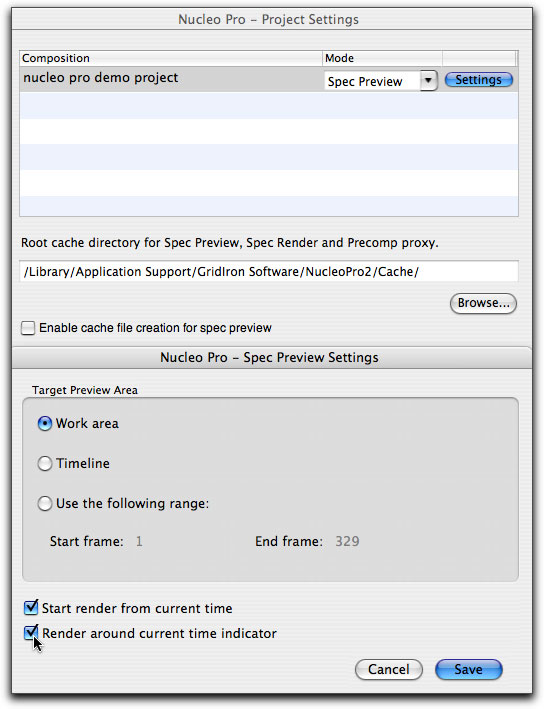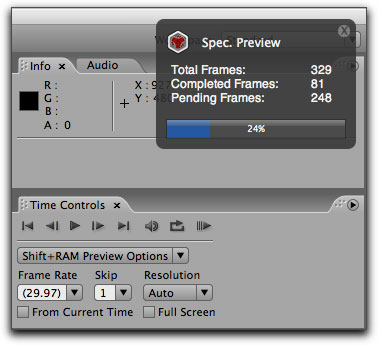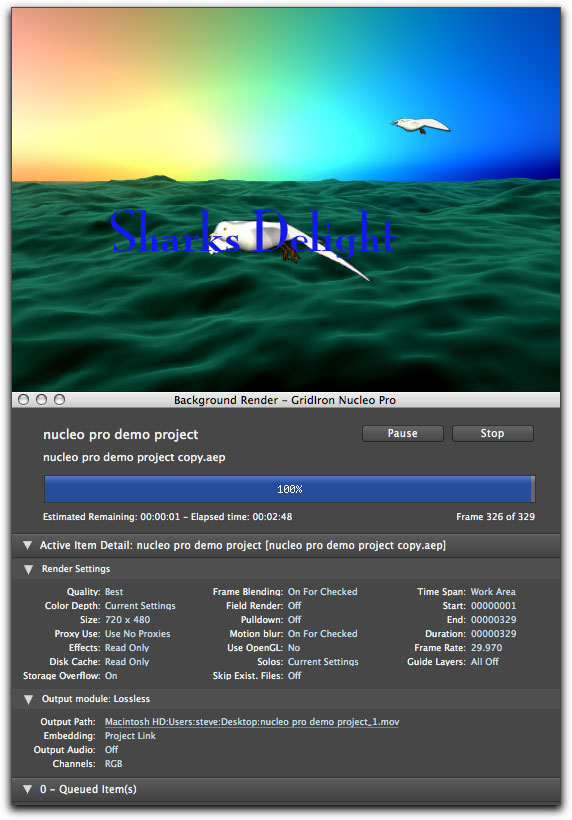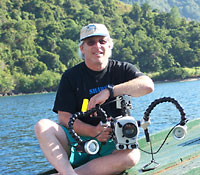
September 24, 2007
![]()
GridIron Nucleo Pro 2 for Adobe After Effects CS3
GridIron Software
Nucleo Pro 2- $395.00
Upgrade from Nucleo Pro 1-$99.00
Review by Steve Douglas
It was a year ago that I first became aware of GridIron's Nucleo Pro 1 and was impressed with how much easier it made my workflow when using Adobe After Effects. With the advent of GridIron's Nucleo Pro 2, I thought it was worth the time to take a second look to see what, if any, new features they had come up with.
What Nucle Pro 2 does is enable the editor working in After Effects to have a smartly enhanced workflow providing the ability to continue working in After Effects even though renders are still being made and parameters within existing AE projects are currently being adjusted. Simply put, GridIrons Nucleo Pro is as effective as it is because it uses almost 100% of your computers' CPUs to generate previews and renders without reducing your computer to a sluggishly behaving beast. Don't ask me how they figured this out, I'm not a software designer, but the fact is that it works. While there are several new features, there also appear to be a number of tweaks to many of the old.
One of the more helpful features in Nucleo Pro is the Spec Preview feature, which allows you quick views of your project composition without having to wait an interminable length of time for a normal ram preview. New to Spec Preview is the ability to open the Nucleo Pro settings, go to your composition and set the Spec Preview to 3 different choices. The 'work area' setting will limit the spec preview to just that area on your After Effects timeline. Click on the 'timeline' and the spec preview will preview the entire timeline regardless of your work area, or, if you should have a particularly layered composition and really do not want to wait to preview the entire thing, you can direct the spec preview to focus strictly on a set frame range.



 Steve Douglas is a certified Apple Pro for Final Cut Pro 6 and underwater videographer. A winner of the 1999 Pacific Coast Underwater Film Competition, 2003 IVIE competition, 2004 Los Angeles Underwater Photographic competition, and the prestigious 2005 International Beneath the Sea Film Competition, where he also won the Stan Waterman Award for Excellence in Underwater Videography and 'Diver of the Year', Steve was a safety diver on the feature film "The Deep Blue Sea", contributed footage to the Seaworld Park's Atlantis production, and a recent History channel MegaDisaster show. Steve is one of the founding organizers of the San Diego UnderSea Film Exhibition and leads both underwater filming expeditions and African safaris with upcoming excursions to Kenya & Lembeh Straits in Indonesia in 2007, the Coco Islands, Costa Rica & Truk Lagoon in 2008 and safari in Africa for 2009. Feel free to contact him if you are interested in joining Steve on any of these exciting trips.
Steve Douglas is a certified Apple Pro for Final Cut Pro 6 and underwater videographer. A winner of the 1999 Pacific Coast Underwater Film Competition, 2003 IVIE competition, 2004 Los Angeles Underwater Photographic competition, and the prestigious 2005 International Beneath the Sea Film Competition, where he also won the Stan Waterman Award for Excellence in Underwater Videography and 'Diver of the Year', Steve was a safety diver on the feature film "The Deep Blue Sea", contributed footage to the Seaworld Park's Atlantis production, and a recent History channel MegaDisaster show. Steve is one of the founding organizers of the San Diego UnderSea Film Exhibition and leads both underwater filming expeditions and African safaris with upcoming excursions to Kenya & Lembeh Straits in Indonesia in 2007, the Coco Islands, Costa Rica & Truk Lagoon in 2008 and safari in Africa for 2009. Feel free to contact him if you are interested in joining Steve on any of these exciting trips.